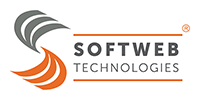In the fast-paced landscape of the digital age, businesses are increasingly turning to Digital transformation and Artificial Intelligence (AI) to not only stay relevant but to thrive in the ever-evolving market.
This article delves into the intricacies of AI disruption and digital transformation, exploring the delicate balance between automation and augmentation. Let’s embark on a journey through the transformative power of AI and how it can lead companies into the blue ocean of possibilities.
Mckinsey’s Global Survey report shows organizations adopting disruptive technologies are able to generate 40% more values for their stakeholders than who have not adopted it.
Unveiling the Power of AI Disruption
The Evolution of AI
To comprehend the impact of AI on digital transformation, one must first grasp the evolution of this groundbreaking technology. AI has transitioned from a futuristic concept to a practical tool, revolutionizing industries and redefining business strategies. From predictive analytics to natural language processing, AI has become an integral part of organizational ecosystems.
Redefining Efficiency through Automation
Automation, a key component of AI, offers businesses the opportunity to streamline operations, reduce costs, and enhance efficiency. Tasks that once required significant human intervention can now be accomplished seamlessly by AI-powered systems. From data entry to routine customer service queries, automation lays the groundwork for enhanced productivity. Even in manufacturing sector, Industry 4.0, has become an important mechanism to increase productivity.
What is Industry 4.0? Click here to Learn More
The Pitfalls of Overreliance on Automation
While automation brings undeniable benefits, there’s a fine line between optimization and overreliance. Relying solely on automation may lead to job displacement and a lack of human touch in customer interactions. Striking the right balance between human expertise and machine efficiency is crucial for sustainable growth.
The Synergy of Augmentation in Digital Transformation
Augmenting Human Capabilities
Augmentation, on the other hand, focuses on enhancing human capabilities rather than replacing them. By integrating AI tools to complement human skills, organizations can create a powerhouse of innovation. Augmentation fosters a collaborative environment where humans and machines work synergistically to achieve unprecedented results.
Fostering Creativity and Innovation
AI augmentation is not just about efficiency; it’s about unlocking creativity and fostering innovation. By handling routine tasks, AI frees up human resources to focus on strategic thinking, problem-solving, and driving visionary initiatives. The true potential lies in the marriage of human intuition with AI’s analytical prowess.
Transformational Synergy: AI and Blue Ocean Strategy
As businesses navigate the waters of digital transformation, the concept of the blue ocean strategy comes to the forefront. The blue ocean represents untapped market potential, and AI serves as the compass guiding organizations toward unexplored territories. The synergy of AI and the blue ocean strategy empowers companies to discover innovative solutions and redefine industry standards.
Other Solutions that incorporates to the Digital Transformation can be read here
Crafting a Vision for the Future
The Holistic Approach to AI Implementation
To truly harness the power of AI disruption and digital transformation, businesses must adopt a holistic approach. This involves strategically integrating AI into various facets of the organization, understanding its limitations, and empowering employees to collaborate effectively with AI tools.
Click here to learn more about the tools in AI for manufacturing industry.
Nurturing a Culture of Continuous Learning
Digital transformation is a continual process and not single point development. To stay ahead in the competitive landscape, organizations must nurture a culture of continuous learning. This involves upskilling employees, fostering adaptability, and embracing the evolving nature of AI technologies.
Navigating this dynamic terrain and embracing digital transformation necessitates not merely adaptation but the deliberate disruption of the status quo. The imperative of unsettling established norms is underscored by the following reasons for success in the digital era:
Encouraging Innovation: By disrupting the status quo, organizations cultivate an ambiance propitious to innovation. Interrogating conventional perspectives and exploring nascent ideas empowers businesses to unearth revolutionary solutions, conferring a competitive edge.
Stimulating Growth and Agility: The status quo typically embodies antiquated methodologies and inflexible structures. Subverting it enables organizations to instill a culture fostering growth and agility. Embracing change facilitates flexibility, adaptability, and the capacity to swiftly pivot in response to evolving market dynamics.
Embracing Customer-Centricity: Disrupting the status quo signifies a shift towards customer-centricity. By challenging established norms, organizations unravel innovative approaches to deliver value and heighten the customer experience. Comprehending and addressing the mutable needs and expectations of customers evolves into a propelling force behind innovation.
Attracting and Retaining Talent: Disruptive entities often exude excitement and dynamism, alluring top-tier talent seeking environments endorsing creativity, collaboration, and perpetual learning. Disrupting the status quo can foster employee engagement and retention.
Effectively disrupting the status quo and embracing digital transformation mandates a cultural milieu supportive of change and innovation. Consider the following pivotal steps:
Encourage a Growth Mindset: Cultivate a culture championing continual learning, inquisitiveness, and an embracement of novel ideas. Empower employees to question the status quo, providing resources and support for pursuing innovative solutions.
Empower Change Champions: Identify change champions within the organizational fabric, catalysts capable of propelling the disruption of the status quo. These individuals should embody a fervor for innovation, wield robust leadership acumen, and inspire others to embrace change.
Embrace Experimentation: Cultivate a secure space for experimentation and risk-taking. Encourage employees to test novel ideas, draw insights from failures, and iterate on solutions. Emphasize the significance of agility and adaptability in navigating the digital panorama.
Navigating the Future with AI
In conclusion, the era of AI disruption and digital transformation offers businesses a roadmap to navigate the complexities of the digital landscape. By embracing both automation and augmentation, organizations can strike a balance that optimizes efficiency while fostering innovation. The true essence lies in leveraging AI as a catalyst for change, steering businesses towards the blue ocean of endless possibilities. As we step into the future, the fusion of human ingenuity and AI capabilities will be the driving force propelling businesses into new dimensions of success.


